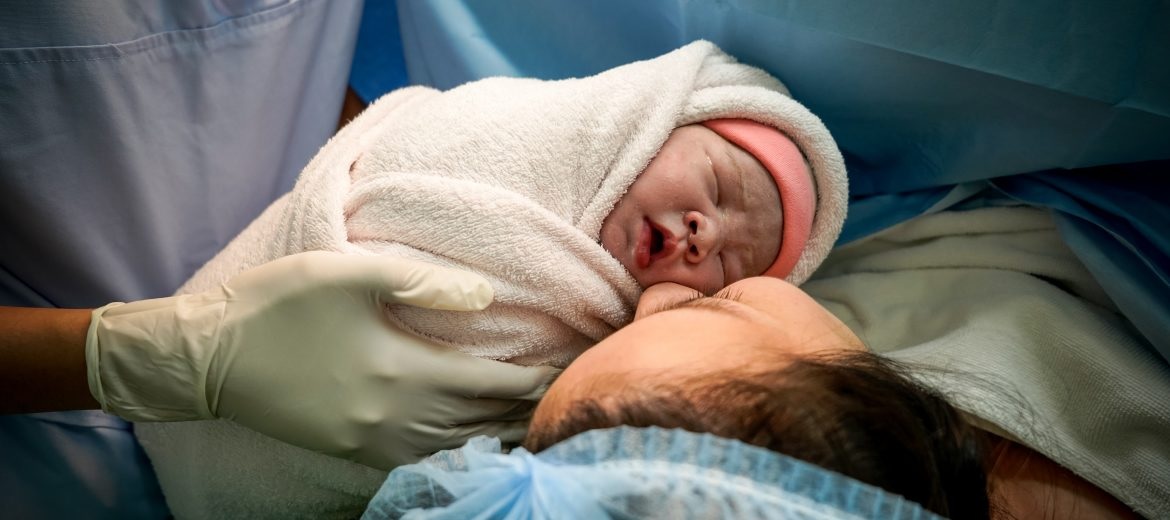C-sections without medical indications may increase the risk of death during childhood
18/10/2021
Antônio H. C. Laranjeira (Cidacs/Fiocruz Bahia)
A study led by the Center for the Integration of Data and Knowledge on Health (Cidacs/Fiocruz Bahia) suggests that C-sections may be associated with a higher risk of infant mortality, with the exception of cases in which a medical indication is clear on this procedure, which is popularly known as “cesarean” in Brazil.
Photo: Courtesy
Using data collected and provided by the Ministry of Health on more than 17 million births in Brazil between 2012 and 2018, researchers from Brazil and from the United Kingdom observed that in the group with a low indication of C-section, this procedure was associated to a risk 25% higher of infant mortality (up to 5 years old) when compared with children who were born of a vaginal birth.
On the other hand, in the group of children born of a C-section due to medical indication, this procedure was associated to a reduction in the number of deaths, highlighting the importance of C-sections when properly indicated by a physician. These findings were published on the on the international scientific magazine PLOS Medicine (USA). The study was carried out in a partnership with the London School of Hygiene & Tropical Medicine (LSHTM), led by epidemiologists Enny Paixão, researcher associated to Cidacs and assistant professor at the LSHTM.
Methodology of the new study
The analysis began with the hypothesis that in groups with low indication of C-section, this procedure would be associated to higher rates of infant mortality. In groups with a medical indication for the procedure, the second hypothesis was that the surgery would likely improve the chances of survival in infancy, i.e. until 5 years of age.
To separate these groups, all births were classified using the system recommended by the World Health Organization: Robson groups, a system used by obstetricians to report routine in all maternities registered in the Live Births Information System (Sinasc) in Brazil.
Next, the study identified the relative mortality rates during the children’s first five years, first comparing cesarean sections with vaginal births, and then comparing elective and non-elective c-sections.
Medical recommendation for C-section
The study used the Robson classification system, a scale that groups women into one of the ten mutually exclusive categories, based on six obstetric characteristics.
In Robson groups 1 to 4, where low rates of propension to C-section are expected, this surgical procedure was associated with a 25% increase in the mortality rate in infancy when compared with children born out of vaginal births, which proves the first hypothesis.
In the case of mothers with a previous C-section (group 5), there was no difference in the rate of infant mortality between those born of C-sections and those born of vaginal births.
For groups 6-10 (babies with non-cephalic presentation, twins, premature), the risk of death after a surgical birth is lower than in vaginal births, which also proves the second hypothesis.
Reality and expectation in Brazil
For epidemiologist Enny Paixão, who is leading the research, this study points to the need for new research lines that together can help pregnant women, their families, and health professionals make informed decisions on the ideal type of birth together with an obstetrician, with the scientific foundation of Robson groups.
Although the rate recommended by the World Health Organization (WHO) is 15%, she warns that Brazil has the world’s second highest rate of C-sections. “We have one of the world’s highest rates (56%), and in private clinics and hospitals this soars to almost nine out of ten births (89%)”, she says.
Considering that C-section is a surgical procedure that is often chosen due to its convenience for mothers, all risks for the baby and the mother must be taken into account by the obstetrician. However, specialists warn that the logic of private health, unlike the public health system, has been reinforcing a “cesarean culture” and Brazil’s position as vice-leader in the world ranking of this procedure.
C-section rates have been going up in many countries, but research has not yet reached a scientific consensus on whether this increase has been driven by maternal preference or medical recommendations. More importantly, it is not yet know how this procedure can impact the child’s health.
“More investigations in this area are necessary, taking into account low- and medium-income contexts, to confirm the results. If confirmed, the interventions directed to pregnant women, health professionals and health systems in Brazil must be strengthened by public health policies in order to reduce the rates of unnecessary C-sections and therefore the risk of mortality among babies”, recommends Paixão.


